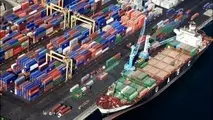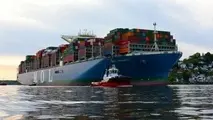Mariana-Max Containership Class Introduced

This week, the Maersk-MSC-CMA-CGM-Amazon-Alibaba-Citibank-Allianz (MMCCAACA) shipping line announced the introduction of its latest ship class, the Mariana-Max. The 350,000 to 400,000 TEU ships will service selected Pacific routes, over which it will replace the To-The-Max ship class of 200,000 TEUs. According to MMCCAACA executives, Mariana-Max ships will create value for their customers by reducing shipping costs per TEU by a factor of 20% (from 5 cents per TEU to 4 cents per TEU).
Several port authorities around the world, including the Le Havre-Antwerp-Rotterdam-Hamburg Port Authority (LHARHPA), immediately announced their ongoing commitment to the fixed $5 per TEU port handling charge imposed by the WTO to level the playing field in port competition. Pressured by the LHARHPA, the European Union announced the revamping of its fair port competitiveness regulation from a subsidy of 99.85% of port charges to a level of 99.95%, which is more reflective of the current environment. The new sub-orbital automated lifting cranes will ensure that the new ships are appropriately handled.
People in the industry recall fondly the introduction of Malacca-Max ships 10 years or so ago. These ships are now servicing small feeder routes, such as between Florida and Cuba. In recent years, due to the lack of growth in global trade, MMCCAACA has reduced its call frequency on most of its routes to one call every 90 days (from the previous standard of one call every 80 days). Further, the environmentally efficient Mariana-Max ships are expected to reach 100 meters per hour with their brand new 5 hamsters power engines that virtually consume no fuel. The ‘super-duper-out-of-this-world slow steaming’ further underline the ongoing commitment of the industry to the environment.
MMCCAACA also announced its intention to continue its lobbying efforts to the United Nations to have parts on the Pacific and Atlantic oceans dredged to the Mariana Trench standard. This impressive geo-tectonic project would give the industry substantial competitive advantages with just slight changes in the orientation of tectonic plates. Pacific coast residents in Nevada expressed concerns that adjusting again tectonic plates may have a negative impact.
Readers also recall that two months ago, the Nicaragua Canal Authority announced its 7th expansion to accommodate To-The-Max ship classes. It was estimated that for the expansion, one third of the country would need to be removed for the digging and dredging efforts (the report forgot to mention that half the population would also need to be relocated). However, some officials in the Chinese Republic of Nicaragua mentioned that the plans may have shifted to the new Mariana-Max standard, but are concerned that the nation may not have enough footprint to accommodate the new standard. This would give an advantage to Panama, which was removed 5 years ago to leave enough room for the To-The-Max ships, and which according to many geo-engineers is ‘Mariana-Max Ready’.
In a related news, negotiations are almost completed concerning the re-positioning of the Caribbean islands of Barbados, St. Lucia and St. Vincent and the Grenadines into a single entity. This would help substantially reduce the deviation that MMCCAACA ships had to undertake to service the small islands. The current inefficient 20,000 TEU ships calling every 120 days will be replaced by a much more efficient 40,000 TEU ships calling every 100 days, implying substantial economic benefits.
A recent estimate by the World Bank placed port infrastructure investments at 95% of the world’s transportation asset valuation. Further, maritime transportation costs accounted for 0.001% of the final value of the goods it carried (excluding the average 99.9994% subsidy). The introduction of the Mariana-Max ship class is expected to further improve the cost efficiency of maritime shipping and therefore support trade facilitation.

